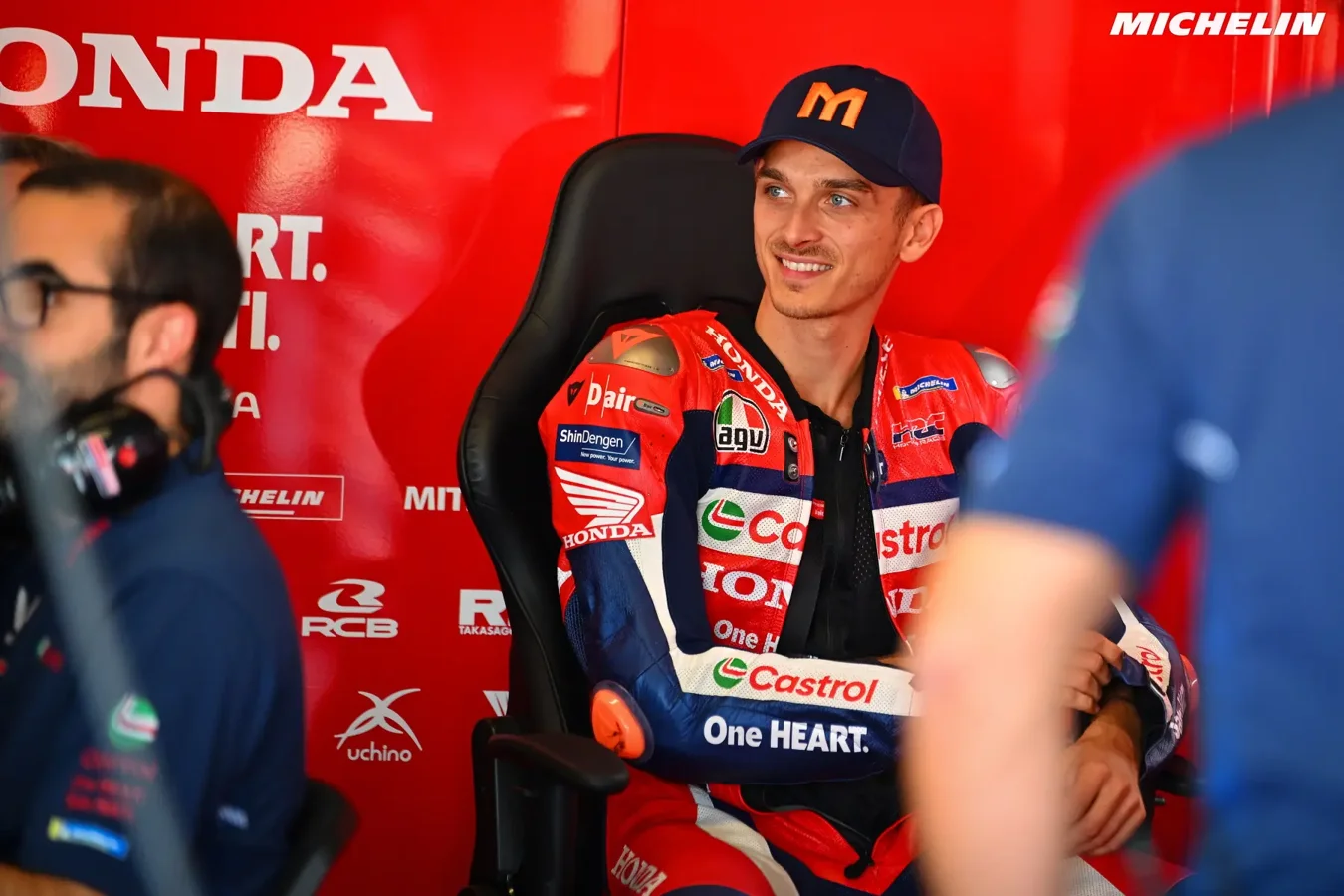Luca Marini, now in his second season as a Honda HRC MotoGP rider, has opened up about the challenges his team faces in unlocking the full potential of the Honda RC213V. While the bike handles well up to 90% of its capacity, pushing beyond that threshold remains a significant hurdle for Honda’s engineers and riders.
Understanding the Limits of the Honda RC213V
Marini described the RC213V as a motorcycle that is relatively manageable for most of its performance range but becomes increasingly difficult when striving to access the final portion of its capabilities. He stated,
“It’s a bike that’s easy to ride, allowing us to tap into 90% of the tire’s capability without any issue,”
but added,
“But once you aim for that elusive last 10%, everything gets complicated.”
This clearly highlights Honda’s ongoing battle to extract maximum performance, which is especially critical during qualifying when fractions of seconds are decisive.
Early Season Challenges and Growing Motivation
The start of the 2024 season was tough for Marini, marked by struggles and a lack of points. He reflected openly on this difficult period:
“The first half of the season was brutal; I hadn’t scored a single point,”
yet remained committed, saying,
“It was undoubtedly the toughest time, but I was aware of the challenge ahead. I’ve always believed in this project, even when it felt like I was in a tunnel. Now, with positive results coming in, my motivation is stronger than ever.”
This perseverance underscores his determination to remain a key figure in Honda’s MotoGP revival.
Collaboration Between Rider and Engineering Teams
Marini emphasized that success in modern MotoGP demands more than just riding skill—it relies heavily on collaboration with engineers and the technical team. He explained,
“I wanted to contribute my experience and ideas, not just about the bike but everything surrounding it,”
adding,
“Modern MotoGP is a blend of pilot finesse and engineering excellence. The best compromise always wins.”
This approach reflects the increasingly technical nature of the sport, where innovation and teamwork are just as vital as raw speed.

Bridging Italian and Japanese Expertise in Development
The spirit of cooperation is tangible within Marini’s team, including a WhatsApp group created to share ideas and innovations. This communication allows instant feedback on new designs and concepts from across the MotoGP paddock. Italian engineers have played a key role in persuading their Japanese colleagues to embrace modern methods involving data analysis, aerodynamics, and advanced electronics rather than relying solely on traditional manufacturing skills.
Impact of Romano Albesiano’s Leadership
The addition of Romano Albesiano, a former figure at Aprilia, has significantly influenced the team’s progress. Marini noted,
“He had to adapt to a new environment and create synergy between the Japanese and Italian teams. It took some time, but now the collaboration is thriving.”
The partnership between engineers, analysts, and technicians under Albesiano’s guidance is pushing the RC213V’s development forward, reflecting a blend of experience and fresh perspectives.
Looking Ahead: Honda’s Quest for Racing Excellence
Though progress has been made, Marini acknowledges the journey toward restoring Honda’s competitive dominance remains challenging. The objective is precise: to regain supremacy in MotoGP, where minuscule details can determine the outcome of entire seasons. Every millimeter counts in this battle for the top, and Marini is committed to propelling Honda to a leading position once again.
This ongoing story of Luca Marini and the Honda RC213V exemplifies relentless dedication, technical innovation, and resilience within the highly competitive arena of MotoGP racing.
